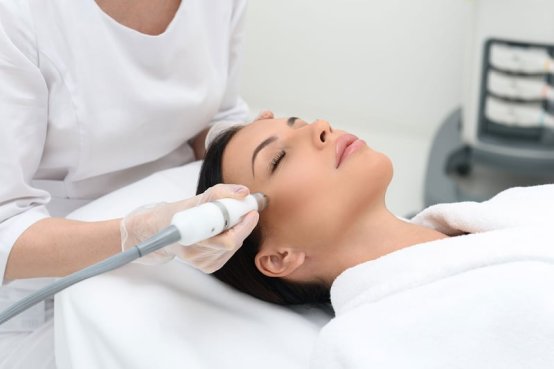

A medical spa, often called a medspa, combines the best aspects of a spa and a medical clinic. It operates under the supervision of a licensed physician—commonly a dermatologist or plastic surgeon—and provides aesthetic procedures that require medical expertise or specialized equipment. Over the past decade, medical spas have become increasingly popular among people seeking non-surgical ways to improve their appearance, maintain skin health, and enhance overall well-being. For anyone considering Botox, laser therapy, or advanced skin rejuvenation, a medical spa offers the ideal balance between medical precision and a serene, spa-like atmosphere.
A medical spa, often called a medspa, combines the best aspects of a spa and a medical clinic. It operates under the supervision of a licensed physician—commonly a dermatologist or plastic surgeon—and provides aesthetic procedures that require medical expertise or specialized equipment. Over the past decade, medical spas have become increasingly popular among people seeking non-surgical ways to improve their appearance, maintain skin health, and enhance overall well-being. For anyone considering Botox, laser therapy, or advanced skin rejuvenation, a medical spa offers the ideal balance between medical precision and a serene, spa-like atmosphere.

Traditional day spas are designed mainly for relaxation and beauty maintenance, offering treatments such as facials, massages, body wraps, and manicures. These services are performed in a soothing environment by aestheticians or massage therapists. A medical spa, by contrast, offers clinical-grade aesthetic procedures overseen or performed by qualified medical staff such as doctors, nurse practitioners, or physician assistants. Treatments often include Botox, dermal fillers, microneedling, and laser therapies that require medical oversight. The main distinction lies in the approach—day spas focus on pampering and comfort, while medspas emphasize medically guided enhancements for visible, lasting results.
Medical spas provide a wide selection of advanced cosmetic and wellness treatments, such as:
Injectables: Botox, Dysport, and dermal fillers like Juvederm or Restylane to smooth wrinkles and restore facial volume.
Laser treatments: Used for skin resurfacing, hair removal, pigmentation correction, and treating acne scars.
Microneedling: Encourages collagen production to improve skin firmness and texture.
Chemical peels: Help remove damaged outer skin layers for a brighter, smoother appearance.
Hydrafacials: Deep-cleansing, hydrating facials performed with medical-grade technology.
Body contouring: Non-invasive fat-reduction procedures such as CoolSculpting.
IV therapy: Provides vitamin and nutrient infusions for hydration and wellness support.
Skin tightening: Uses ultrasound or radiofrequency energy to lift and firm sagging areas.
Hair-loss treatments: Some medspas provide medically supervised solutions like PRP therapy, microneedling with growth factors, or prescription-based treatments to address thinning hair.
Many medspas also extend their services to include wellness programs such as hormone therapy, weight management support, or medical-grade skincare products.
Although a licensed physician oversees the operation, many treatments are administered by trained medical professionals, including:
Nurse practitioners (NPs)
Physician assistants (PAs)
Registered nurses (RNs)
Licensed aestheticians with advanced certification
It is essential to select a medspa where the staff hold proper credentials and follow established safety protocols.
Professional oversight: All procedures are medically approved and supported by clinical research.
Non-surgical results: Many treatments deliver noticeable improvements without the downtime of surgery.
Customized care: Services are adjusted based on each client’s skin type, health background, and personal goals.
Comfortable setting: You receive care in a peaceful environment designed for relaxation and rejuvenation.
When evaluating potential medspas, keep these points in mind:
Confirm that a board-certified physician is involved in supervision or treatment planning.
Verify that injectables and laser procedures are performed by qualified medical staff.
Review client testimonials and check before-and-after photos.
Assess the facility’s cleanliness, professionalism, and atmosphere.
Ensure a consultation is provided before any treatment is scheduled.
A typical appointment begins with a consultation—particularly for new clients. A licensed professional, such as a nurse practitioner or physician assistant, will review your medical history, assess your skin or treatment goals, and discuss suitable options. After agreeing on a plan, some treatments can be performed immediately, while others are scheduled for another visit. Procedures take place in a clean, spa-inspired setting. Comfort measures like numbing cream may be used, and aftercare instructions are provided. Follow-up appointments may also be recommended to ensure proper results and recovery.
A medical spa blends clinical expertise with a relaxing environment, offering both effectiveness and comfort. Whether your goal is to reduce wrinkles, refresh dull skin, treat sun damage, or improve body tone, medspas provide safe and advanced solutions. By researching options carefully and choosing an experienced facility, you can enjoy visible results supported by professional care—truly the best of both the medical and spa worlds.